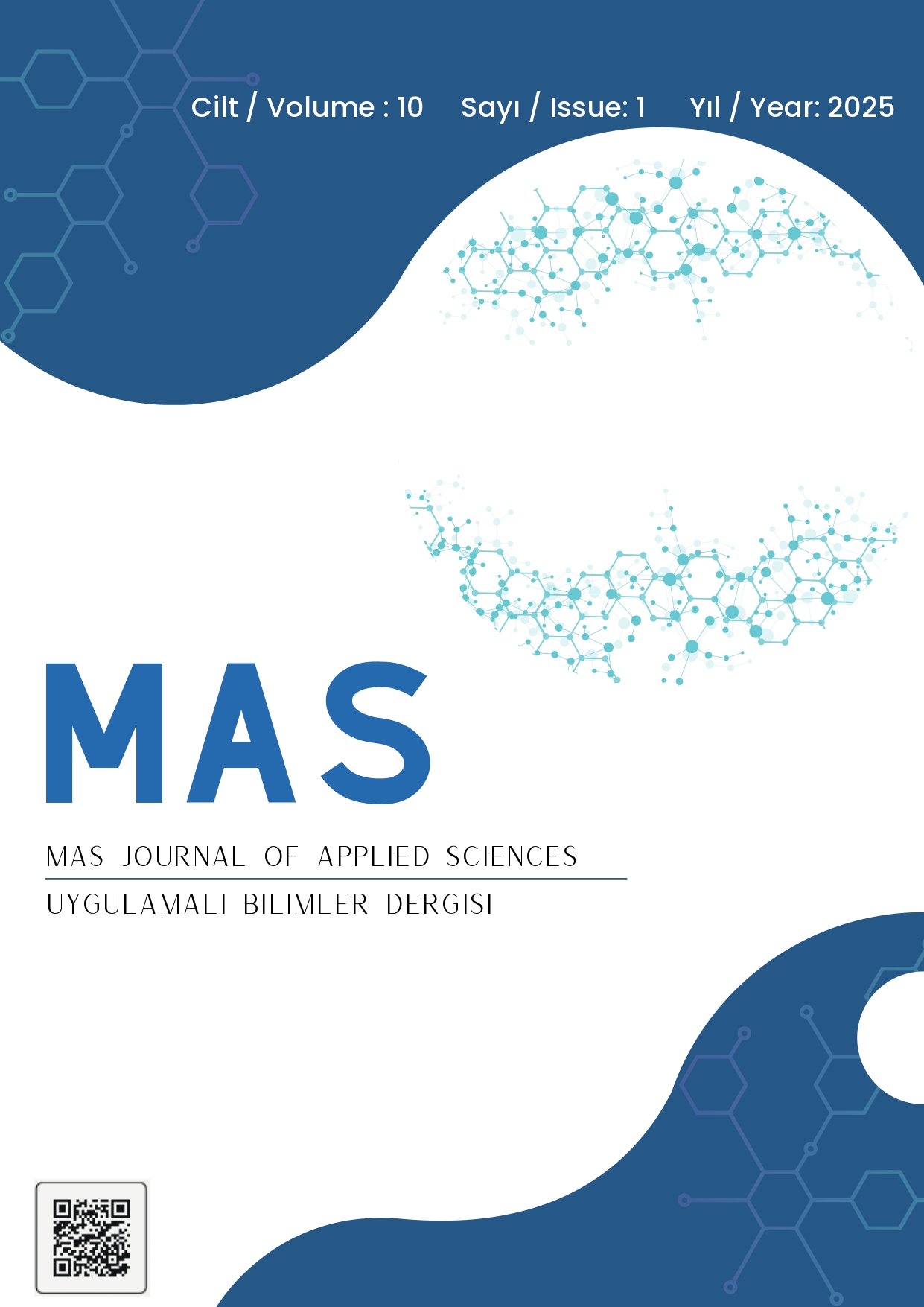The Synthesis and Electrochemical Characterization of an Electron Donor-Acceptor Co-Monomer
DOI:
https://doi.org/10.5281/zenodo.15087877Keywords:
Thiophene, imidazole, electron donor-acceptor, electropolymerizationAbstract
This article presents the synthesis, characterization and electrochemical polymerization conditions of 4, 5-dithiophene imidazole (Th2-Im) co-monomer with donor-acceptor character carrying thiophene and imidazole monomer synthesized using Still Cross Coupling reaction. The obtained synthesis product (Th2-Im) was characterized by FT-IR, XPS and SEM images. In the synthesis structure, the presence of S atom belonging to the Th ring was observed in the 175 eV region, and the presence of N atom belonging to the Im ring was observed in the 411 eV region. In addition, B atom, which would indicate the presence of dopant anion, was observed in the 202 eV region. It was determined by SEM images that Poly (Th2-Im) had a more distinct and regular geometric texture than Poly (Th) morphologically. It was determined that Th2-Im was oxidized at 0.6 V from electrochemical polymerization. From monomer free CV, it was determined that Poly (Th2-Im) showed 3 oxidation peaks as 0.25V, 0.75V and 1.2V and 3 reduction peaks as 0.7V, 0.4V and 0.1 V. It was determined that the synthesis polymer obtained from these data could be polymerized more easily than Th and Im and the donor-acceptor character could be clearly observed in CV graphs.
References
Allard, S., Forster, M., Souharce, B., Thiem, H., Scherf, U., 2008. Organic semiconductors for solution-processable field-effect transistors (OFETs). Angewandte Chemie international edition, 47(22): 4070-4098.
Arakl, M., Kato, K., Koyanagi, T., Machida, S., 1977. Spontaneous polymerization of maleic anhydride by imidazole derivatives. I. Journal of Macromolecular Science: Part A - Chemistry, 11(5): 1039–1052.
Bahnous, M., Mouats, C., Fort, Y., Philippe C. G., 2006. Convenient multi-gram scale synthesis of polybrominated imidazoles building blocks. Tetrahedron Letters, 47(12): 1949-1951.
Baran, D., Balan, A., Celebi, S., Esteban, B.M., Neugebauer, H., Sariciftci, N.S., Toppare, L., 2010. Processable multipurpose conjugated polymer for electrochromic and photovoltaic applications. Chemical Materials, 22(9): 2978–2987.
Beaupr´e, S., Boudreault, P.T., Leclerc, M., 2010. Solar-Energy production and energy-efficient lighting: photovoltaic devices and white-light-emitting diodes using Poly(2,7-fluorene), Poly(2,7-carbazole), and Poly(2,7-dibenzosilole) Derivatives. Advanced Materials, 22(8): E6.
Dmitrieva, J.E., Żołek, T., Maciejewska, D., Rybakiewicz-Sekita, R., Kutner, W., Noworyta, K.R., 2022. An insight into the polymerization process of the selected carbazole derivatives - why does it not always lead to a polymer formation? Electrochimica Acta, 429: 140948.
Dolas, H., Sezer, E., Sarac, AS., 2016. Synthesis, characterization and electrochemical polymerization of a comonomer bearing thiophene and imidazole: the comparison of impedance behavior on different surfaces. The Electrochemical Society, Journal of Solid State Science and Technology, 5(5): P211.
Furukawa, Y., Akimoto, M., Harada, I., 1987. Vibrational key bands and electrical conductivity of polythiophene, Synthetic Metals, 18(1-3): 151-156.
Invernale, M.A., Ding, Y., Mamangun, D.M. D., Yavuz, M.S., Sotzing, G.A., 2010. Preparation of conjugated polymers inside assembled solid-state devices. Advanced Materials, 22(12): 1379.
MacDiarmid, AG., 2001. “Synthetic metals”: a novel role for organic polymers. Current Applied Physics, 1(4-5): 269-279.
Mahimai, B.M., Li, E., Pang, J., Zhang, J., Zhang, J., 2024. Interface engineering in conducting polymers-based supercapacitor. Journal of Energy Storage, 96: 112598.
Pournaghi-Azar, M-H., Habibi, B., 2007. Electropolymerization of aniline in acid media on the bare and chemically pre-treated aluminum electrodes: A comparative characterization of the polyaniline deposited electrodes. Electrochimica Acta, 52(12): 4222-4230.
Socretis, G. 1980. Infrared Characteristic Group Frequencies. Wiley, London.
Sönmez, G., Saraç, A.S., 2002. In situ spectroelectrochemistry and colorimetry of poly(pyrrole-acrylamide)s. Journal of Materials Science, 37:4609–4614.
Tanaka, K., Shichiri, T., Yamabe, T., 1986. Influence of polymerization temperature on the characteristics of polythiophene films. Synthetic Metals, 16(2): 207-214.
Zhang,Y., Li, R., Chang, L., Ma, Y., Hou, Y., Niu, H., 2022. Electropolymerization of Thiophene-Based Monomers with Different Spatial Structures: The Impact of Monomer Structure on Electrochromic Properties. Macromolecular Chemistry and Physics, 223(2): 2100341.
Zhou, M., Pagels, M., Geschke, B., Heinze, J., 2002. Electropolymerization of pyrrole and electrochemical study of polypyrrole. 5. controlled electrochemical synthesis and solid-state transition of well-defined polypyrrole variants. The Journal of Physical Chemistry B, 106(39): 10065–10073.
Downloads
Published
How to Cite
Issue
Section
License
Copyright (c) 2025 The copyright of the published article belongs to its author.

This work is licensed under a Creative Commons Attribution-NonCommercial 4.0 International License.


